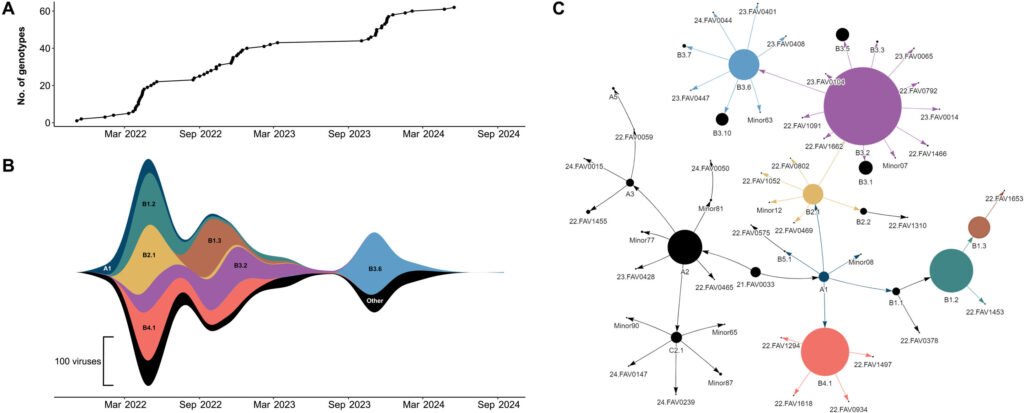Bird Flu Continues to Evolve, Infecting More Hosts and Spreading Effectively
The avian flu, also known as the H5N1 virus, may not be making headlines as frequently as before, but it is still actively evolving into more potent strains. Since its detection in Canada in 2021, the highly pathogenic avian flu has infected over 180 million domestic birds in both Canada and the United States. A recent study published in Science Advances reveals that the H5N1 virus has been mixing with low-pathogenicity avian influenza viruses (LPAIVs), expanding its host range and geographical reach.
Research conducted on 2,955 viral genomes collected from infected domestic and wild birds between 2021 and 2024 in Canada, along with previously published data, paints a comprehensive picture of the genetic evolution of the bird flu virus. The findings highlight the virus’s genetic evolution and its spread throughout North and South America, largely aided by migrating birds.
The study demonstrates a significant increase in the viral fitness of the bird flu virus, attributed to frequent reassortment events. Reassortment occurs when two or more viruses infect the same cell, exchanging genetic material to create new progeny viruses with a different combination of traits. This process often results in viruses that can infect a wider range of hosts, facilitating their spread across different regions. The study indicates that multiple reassortment events have occurred in the bird flu virus, with newer genotypes outcompeting their predecessors.
Certain geographical regions, such as the Prairie Pothole Region in the Great Plains, serve as hotspots for viral transmission and spread. This region attracts a large number of migratory birds due to its location at the intersection of several migration routes, making it a prime breeding ground for ducks, geese, and other waterfowl. The study found that the migratory periods in May 2022, October 2022, and October 2023 coincided with the emergence of new genotypes and peak viral detection, indicating that wild birds are the primary carriers of the newer strains.
Unlike previous iterations of avian flu that primarily circulated in domestic poultry, the current strains are more prevalent in wild birds, making containment challenging due to their migratory nature. The study also uncovered evidence of the virus spreading to some mammals, which then transmitted it back to birds.
Given the high mortality rate in poultry and the increased transmission to other animals and potentially humans, efforts to mitigate bird flu remain crucial. Continued research is essential for understanding viral evolution, preventing future pandemics, and devising effective disease control strategies in poultry industries and wildlife management.
Written by Krystal Kasal, edited by Gaby Clark, and fact-checked by Andrew Zinin, this article highlights the evolving nature of the bird flu virus and the importance of ongoing research to combat its spread and impact on both animal and human populations.
Reference:
Anthony V. Signore et al. Spatiotemporal reconstruction of the North American A(H5N1) outbreak reveals successive lineage replacements by descendant reassortants. Science Advances (2025). DOI: 10.1126/sciadv.adu4909
© 2025 Science X Network


